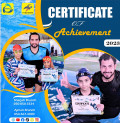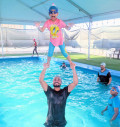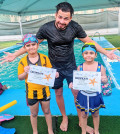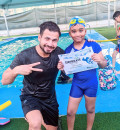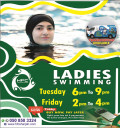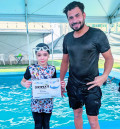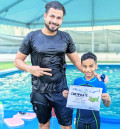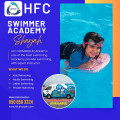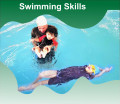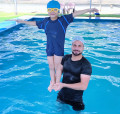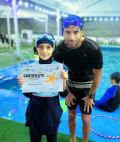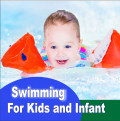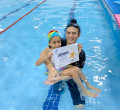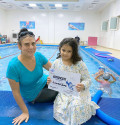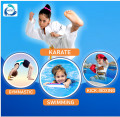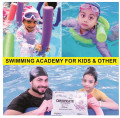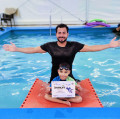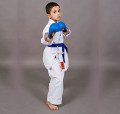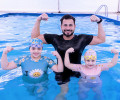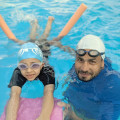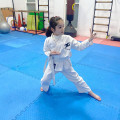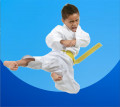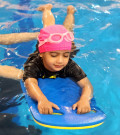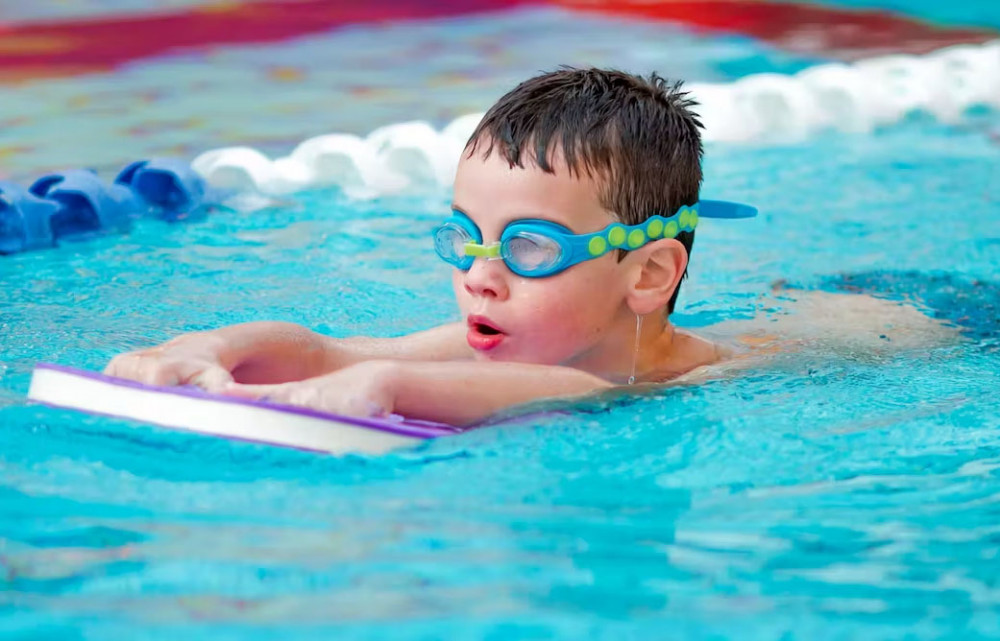
Swimming Success Great Steps for Kids to learn Swimming Skills
2024-02-16 - swimmingIntroduction
Embarking on the journey of swimming is not just about
mastering strokes; it's about instilling confidence, safety, and joy in the
water. For kids, learning to swim opens up a world of fun and fitness while
fostering essential life skills. In this guide, we'll explore the best
strategies and techniques to help your little ones become proficient swimmers,
covering everything from water safety to advanced stroke techniques.
Foundational Principles of Swimming
Getting Comfortable in the Water
Introducing kids to the aquatic environment should be a
gradual process, focusing on building trust and comfort. Start with simple
water play activities to acclimate them to the sensation of being in the water.
Encourage games like splashing, blowing bubbles, and floating with support to
help them feel at ease.
Breathe Control Techniques
Teaching proper breathing techniques is fundamental to
swimming success. Practice breath control exercises such as blowing bubbles
underwater and rhythmic breathing patterns to help kids regulate their breath
while swimming.
Learning Basic Floating Techniques
Mastering floating lays the groundwork for learning various
swimming strokes. Teach kids basic floating techniques like the back float and
front float, emphasizing relaxation and buoyancy.
Kicking Skills Development
Kickboard drills are excellent for developing leg strength
and propulsion. Guide kids in using kickboards to practice flutter kicking,
focusing on proper technique and rhythm.
Building Confidence and Water Safety
Gradual Depth Progression
Gradually increase water depth as kids become more
comfortable and confident. Start in shallow water where they can touch the
bottom and progress to deeper areas as their skills improve.
Introduction to Treading Water
Treading water is a vital survival skill that boosts
confidence in deep water. Teach kids basic treading techniques, emphasizing
staying calm and using gentle movements to stay afloat.
Safety Rules and Awareness
Instill essential safety rules such as never swimming alone,
staying within designated swimming areas, and understanding water currents.
Teach kids to recognize potential hazards and how to respond in emergency
situations.
Great Swimming Steps for Kids to Learn Swimming Skills
Freestyle Stroke (Front Crawl)
The freestyle stroke, also known as the front crawl, is a
foundational swimming technique. Start by teaching the arm movements in
isolation, then integrate kicking and breathing into the stroke. Encourage
smooth, rhythmic movements for efficient swimming.
Backstroke Technique
The backstroke offers a unique perspective and is excellent
for building confidence in kids. Teach them the arm and leg movements for
backstroke while emphasizing proper body positioning and coordination.
Breaststroke Basics
Breaststroke is known for its frog-like kick and
simultaneous arm movements. Break down the breaststroke technique into
manageable steps, focusing on glide, kick, pull, and breathing coordination.
Introduction to Butterfly Stroke
The butterfly stroke is more advanced but can be introduced
gradually to kids who have mastered other strokes. Begin with dolphin kick
drills and progress to coordinating the butterfly arm movements with the
powerful kick.
Conclusion
Navigating the waters of teaching kids to swim requires
patience, encouragement, and a solid understanding of swimming fundamentals. By
following these great swimming steps for kids to learn swimming skills, you can
empower your children to become confident and capable swimmers, setting them up
for a lifetime of aquatic enjoyment and safety.







.jpg)




















